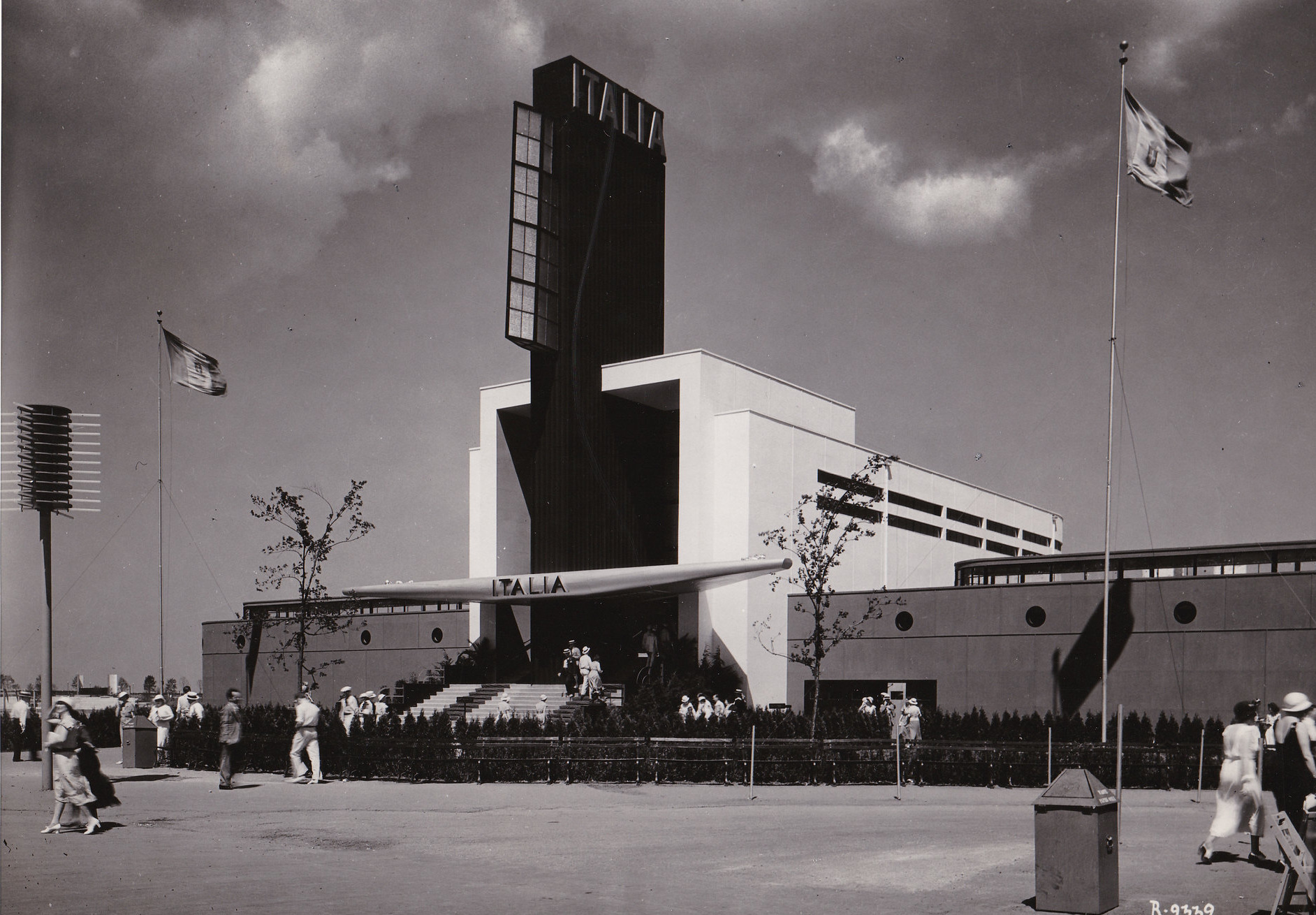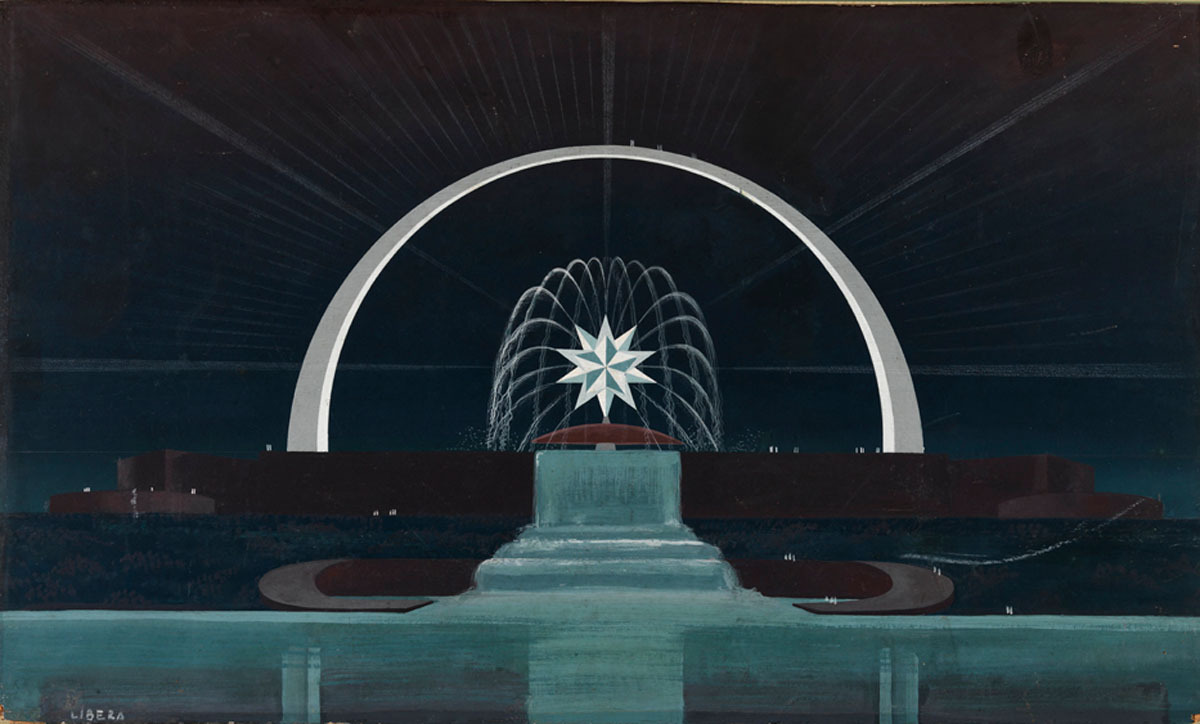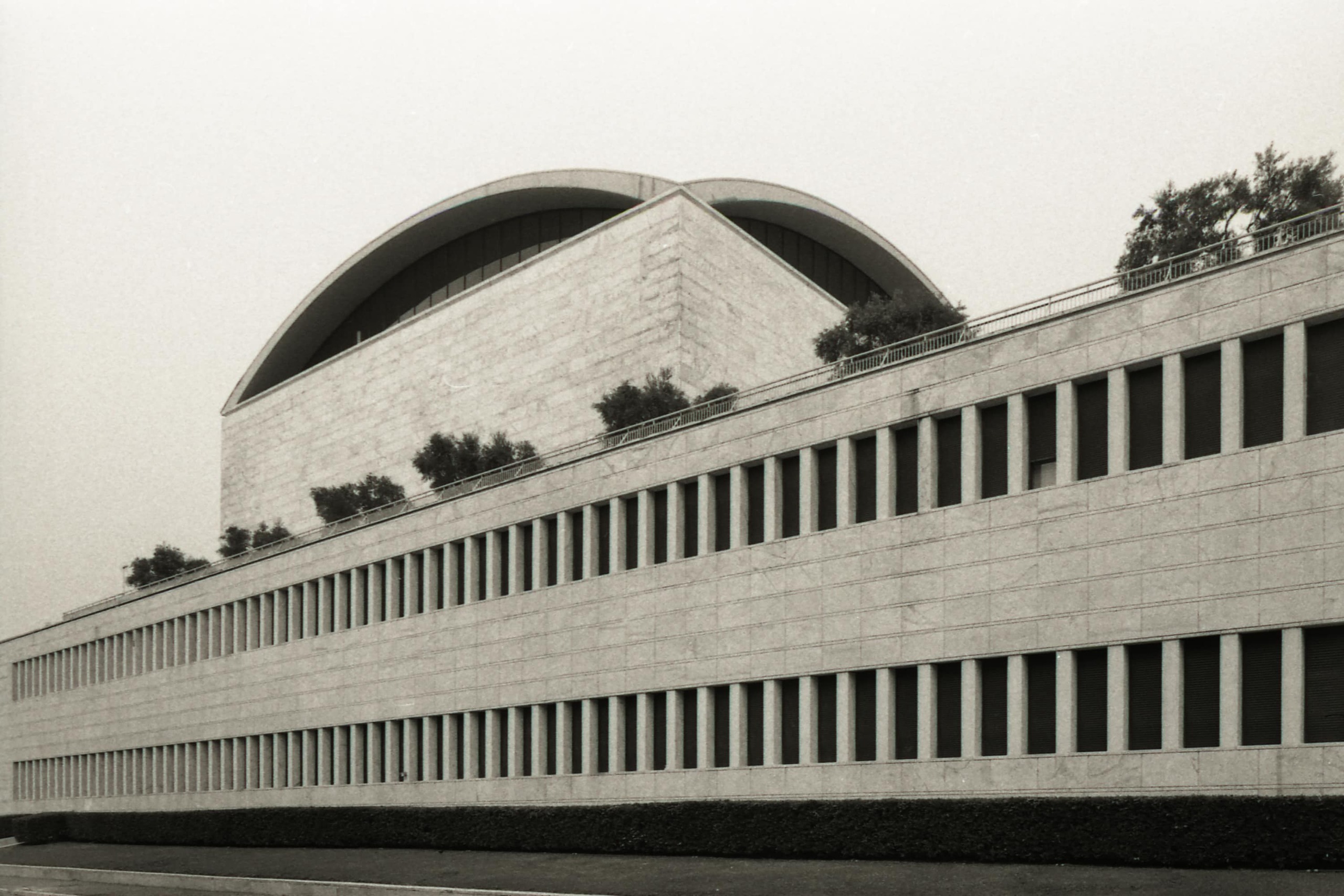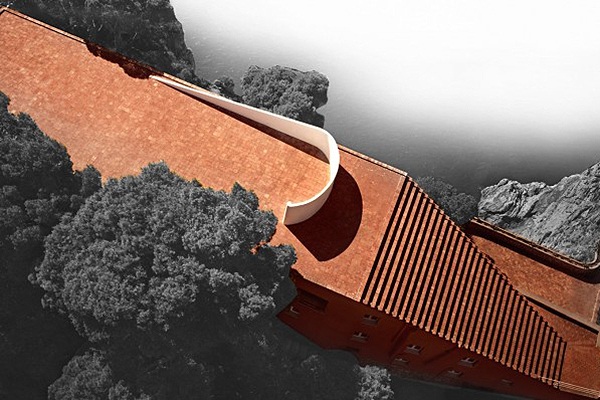The son of a marquess educated in Rome, Adalberto Libera was an art connoisseur with a vivid imagination. The only Italian among the young architects that Ludwig Mies van der Rohe invited to participate in the Werkbund exhibition in Stuttgart in 1927, Libera listed Mies as his major influence until the end of his life.
Libera was an enthusiastic supporter of Mussolini’s regime, for which he created a number of outstanding propaganda projects. However, the Palace of Congresses he designed for the World Expo, which was to take place in Rome in 1942, was completed only after the Second World War and became one of the symbols of contemporary Italian architecture. Libera spent the war in seclusion in his family home in Trentino—during that time he reviewed his political beliefs and a few years after the war became involved in the construction projects of the socialist government. In his mature period, he came to believe that the architect should build the project “correctly,” leaving very little space for self-expression. Nevertheless, his postwar projects featured bold structural design and expressive forms.







